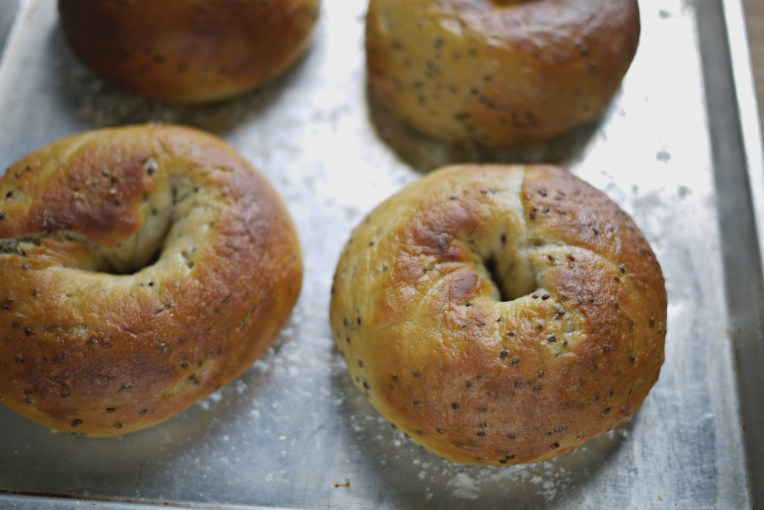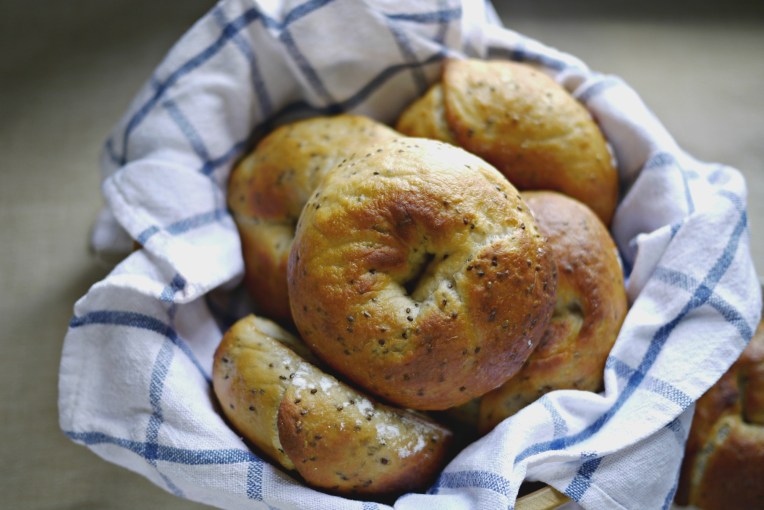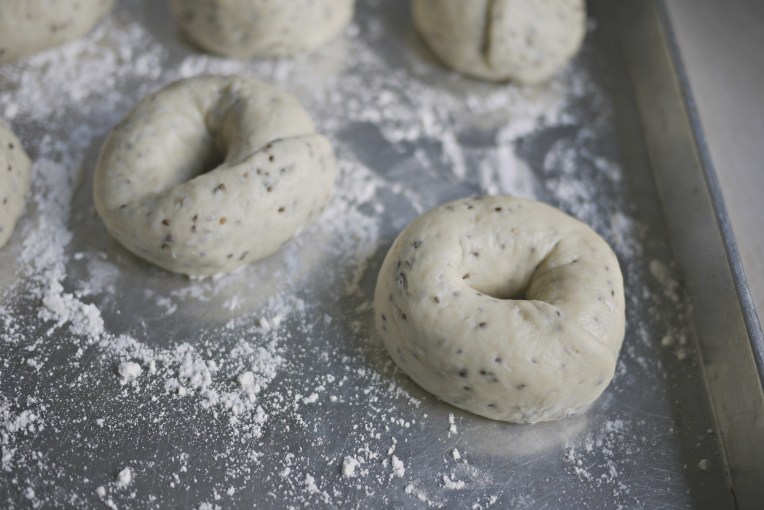
Mashed taro is my favorite thing to add to the bread recipes I bake. They never alter the bread color or flavor, simply making the bread texture softer than usual.
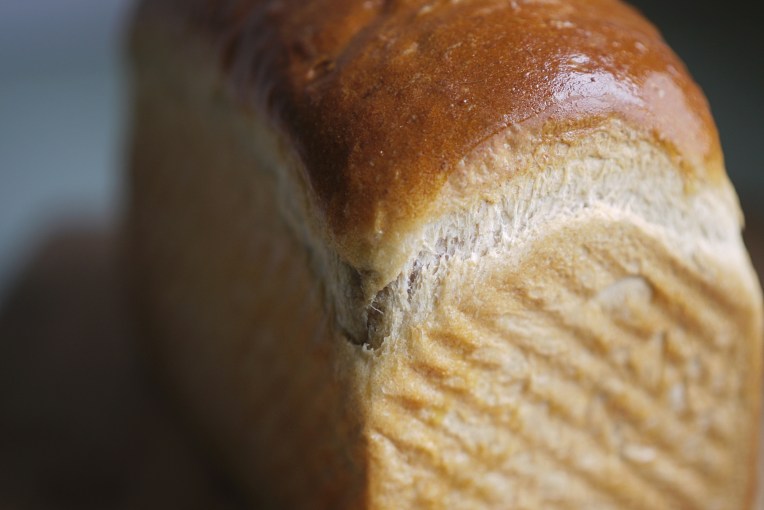
I finally got my white flour from the market but I didn’t want to bake a white bread loaf, so I mixed some wholemeal flour into this Nutella swirl bread. The addition of taro always makes my bread soft and fluffy even when I mix some wholemeal flour into the dough.

I am kind of a Nutella fan (it’s not that hard to be one anyway,) ‘kind of’ because we are in the process of making an 850g jar to last for 4 months. If we finish up a bottle sooner than planned, we’ll just have to wait until the next “buy-Nutella-month” comes along. This makes us ration our Nutella treats really carefully and explore other sandwich/toast/breakfast options.
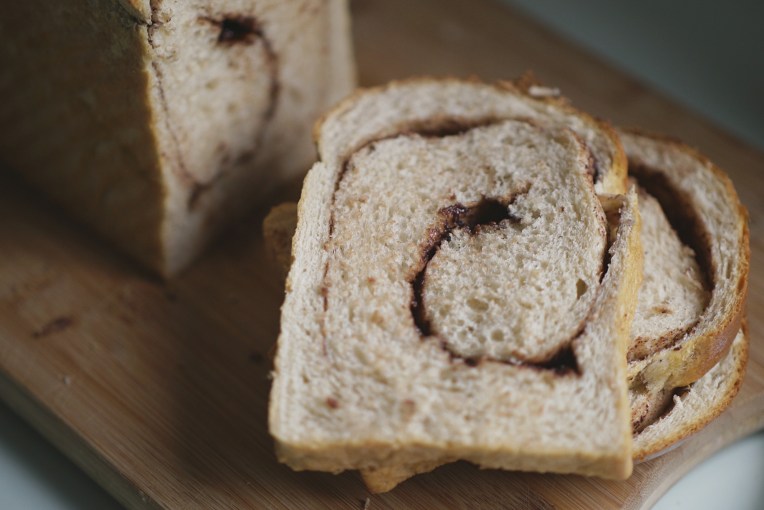
This Nutella swirl loaf merely used up 3 heaped teaspoons of Nutella as I spread them as thinly as possible on the bread dough, before rolling it up for a final proof inside the Pullman bread tin.

It’s certainly not as luxurious as this or this, but I still managed to taste the chocolate hazelnut spread with every bite.
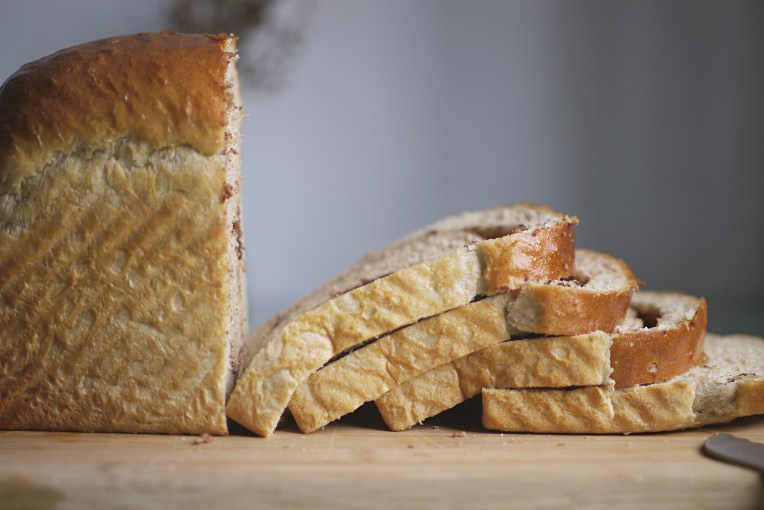
The bread is best eaten on the day it’s baked, if serve while it is still warm will be even better. Remember what I mentioned earlier about how taro produces soft fluffy bread? I almost forgot that I added 100g of wholemeal flour to this loaf.
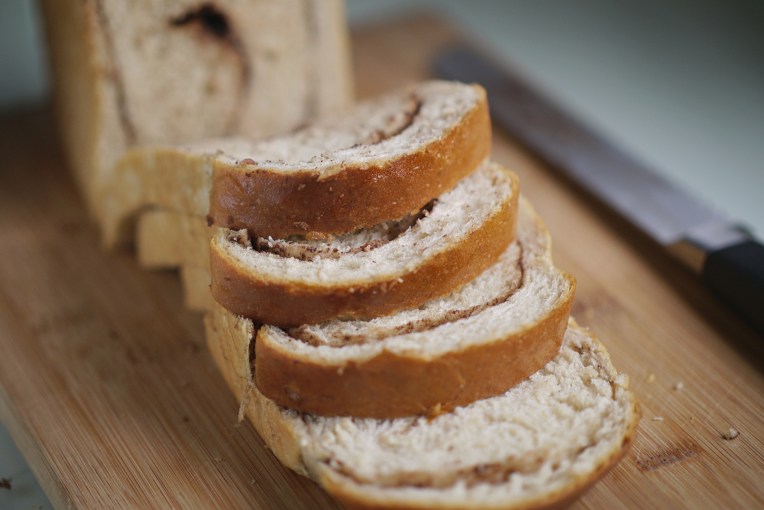
The top crust were baked to a beautiful golden brown shade. I brushed it with melted butter immediately when the bread is cooked to keep it soft instead of crusty when the bread cools completely.
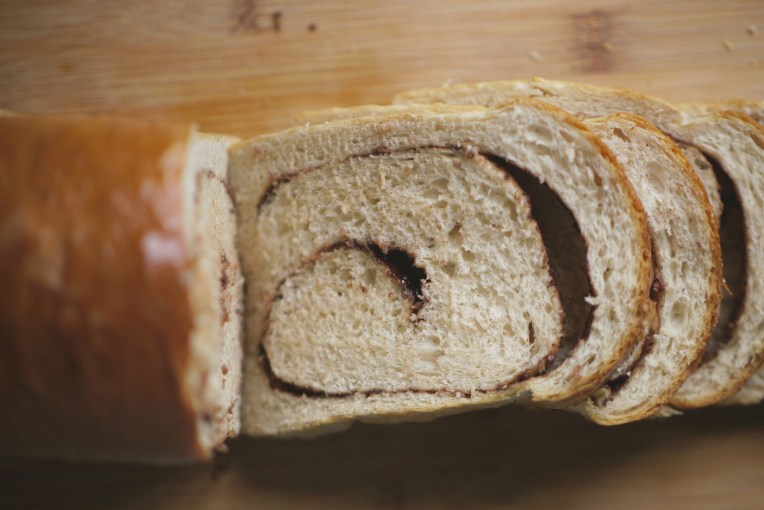
Nutella Swirl Bread
200g plain flour
100g wholemeal flour
130g steamed taro, mashed
1 egg
2 tablespoons raw sugar
1/4 teaspoon sea salt
2 tablespoon milk powder **
1 teaspoon instant dry yeast
80g water
25g cold butter cubed
3 heaped teaspoons Nutella spread ***
** I use milk power to substitute fresh milk, optional. If you prefer fresh milk, use it in place of water in the recipe.
*** I use the minimal amount of Nutella in the recipe, feel free to add more according to preference.
In a mixer bowl, combine all the dry ingredients together ( plain and wholemeal flour, raw sugar, salt, yeast,milo powder) with a hand whisk. Then add mashed steamed taro, egg, and slowly add the water with the mixer running. Watch the dough, when the ingredients come into a ball, stop adding and turn off the mixer. You may need more or less of the water stated in the recipe. Let the dough rest for 15 minutes.
After 15 minutes, start the mixer again to knead for 1 minute before adding cubed butter one by one, and knead till the dough reach window pane stage. This is when the dough becomes very smooth and elastic, and starts to pull away from the sides of the bowl. Stop mixer and leave dough to bulk rise for 60 minutes.
After the dough has risen, punch down the dough to deflate and transfer to a clean work top. Sprinkle worktop and palms with flour if the dough is too sticky to handle.
Flatten the dough into a rectangular, with one end about the length of the longer side of pullman tin so that when the rolled up dough fits the baking tin. Spread Nutella and rolling up the dough swiss roll style. Pinch opening to seal tightly. Place dough in a Pullman tin, seam side downwards. Leave this aside to proof for 60minutes, covered.
Preheat oven to 170C, and bake the bread for 30 minutes.
Remove from oven immediately after baking time is up, and brush melted butter over the top crust. Let bread cool.
If not eaten immediately, store in airtight container keep the crumbs from drying out.
Save
Save
Save
















































